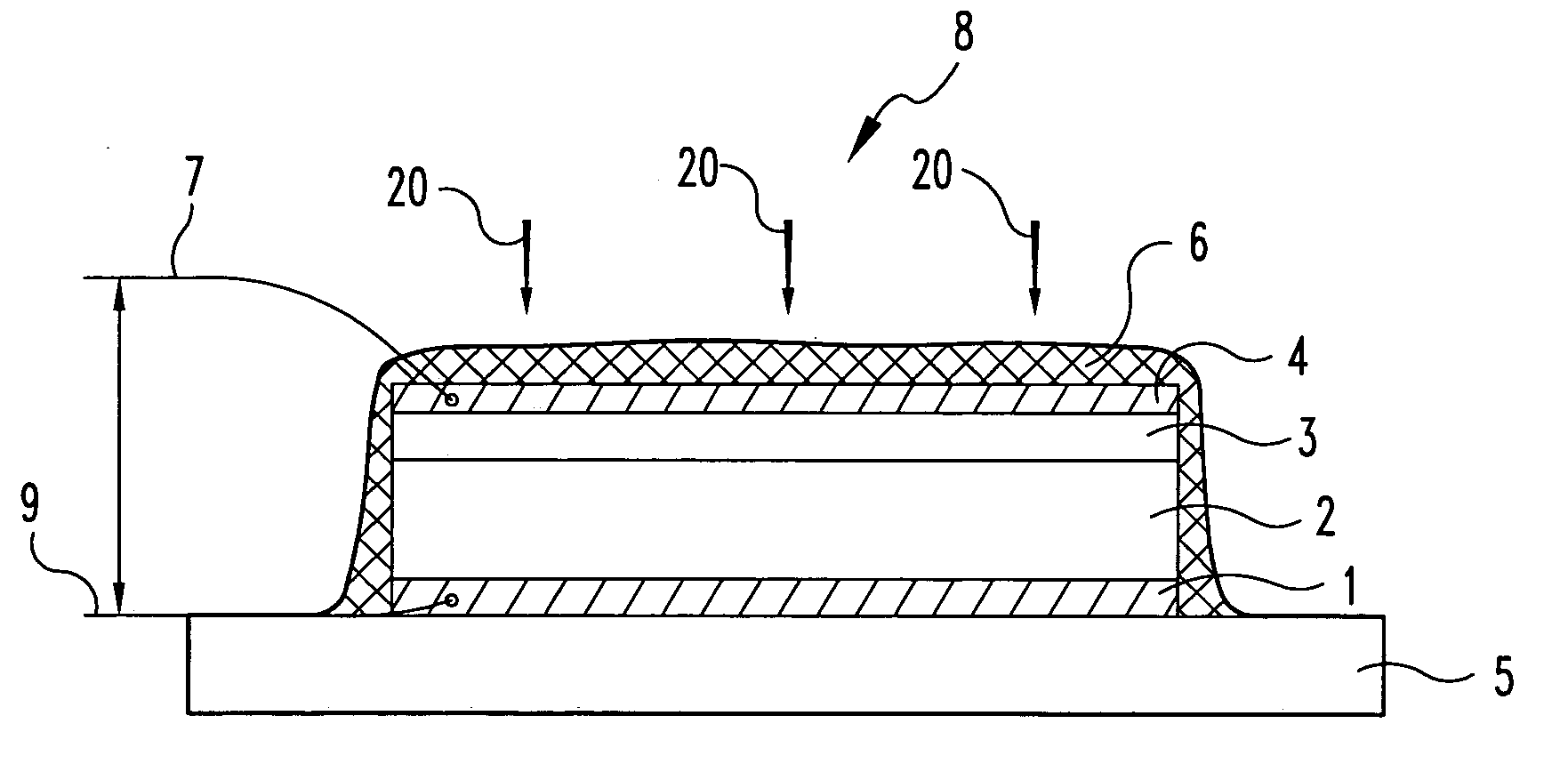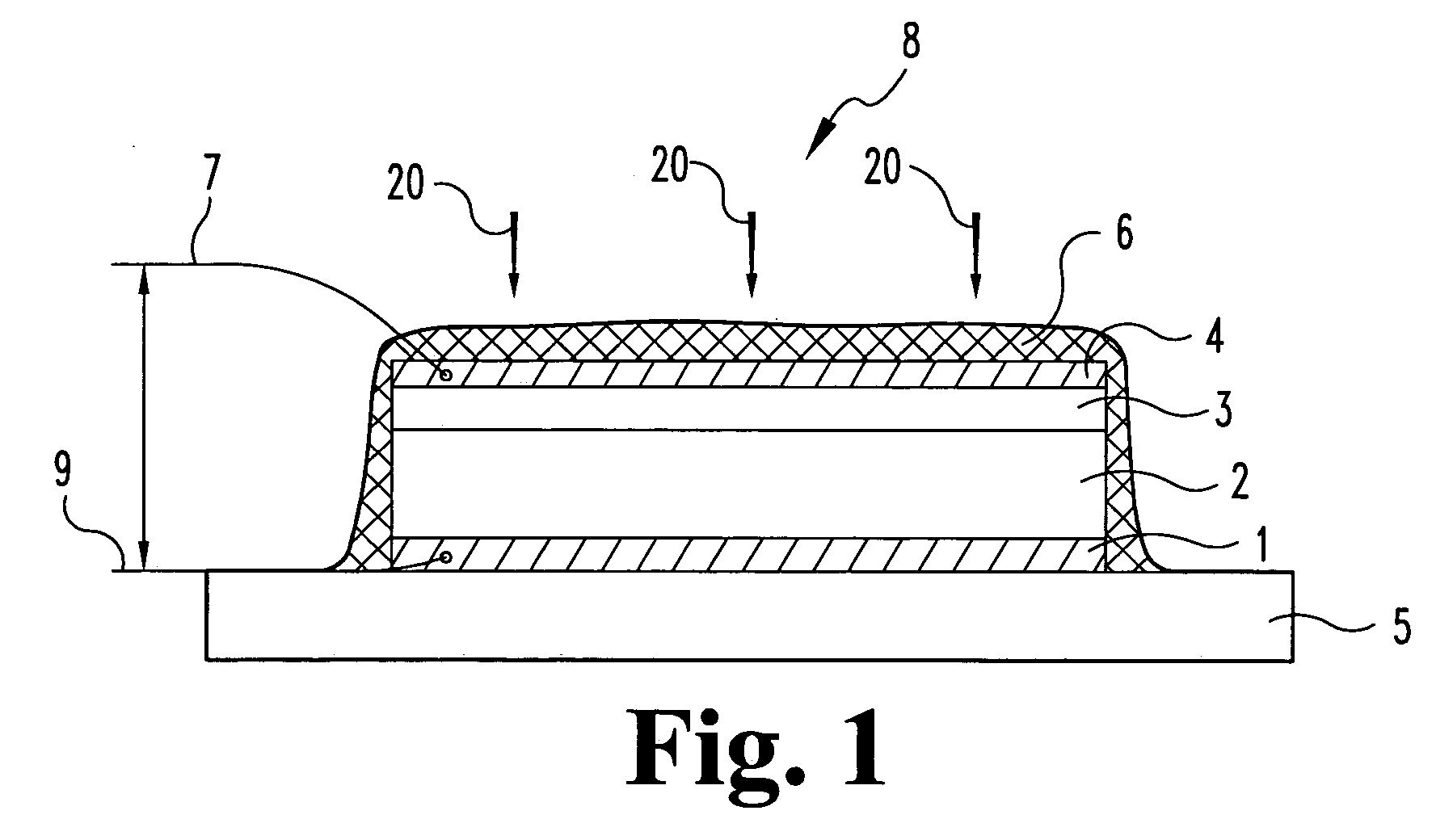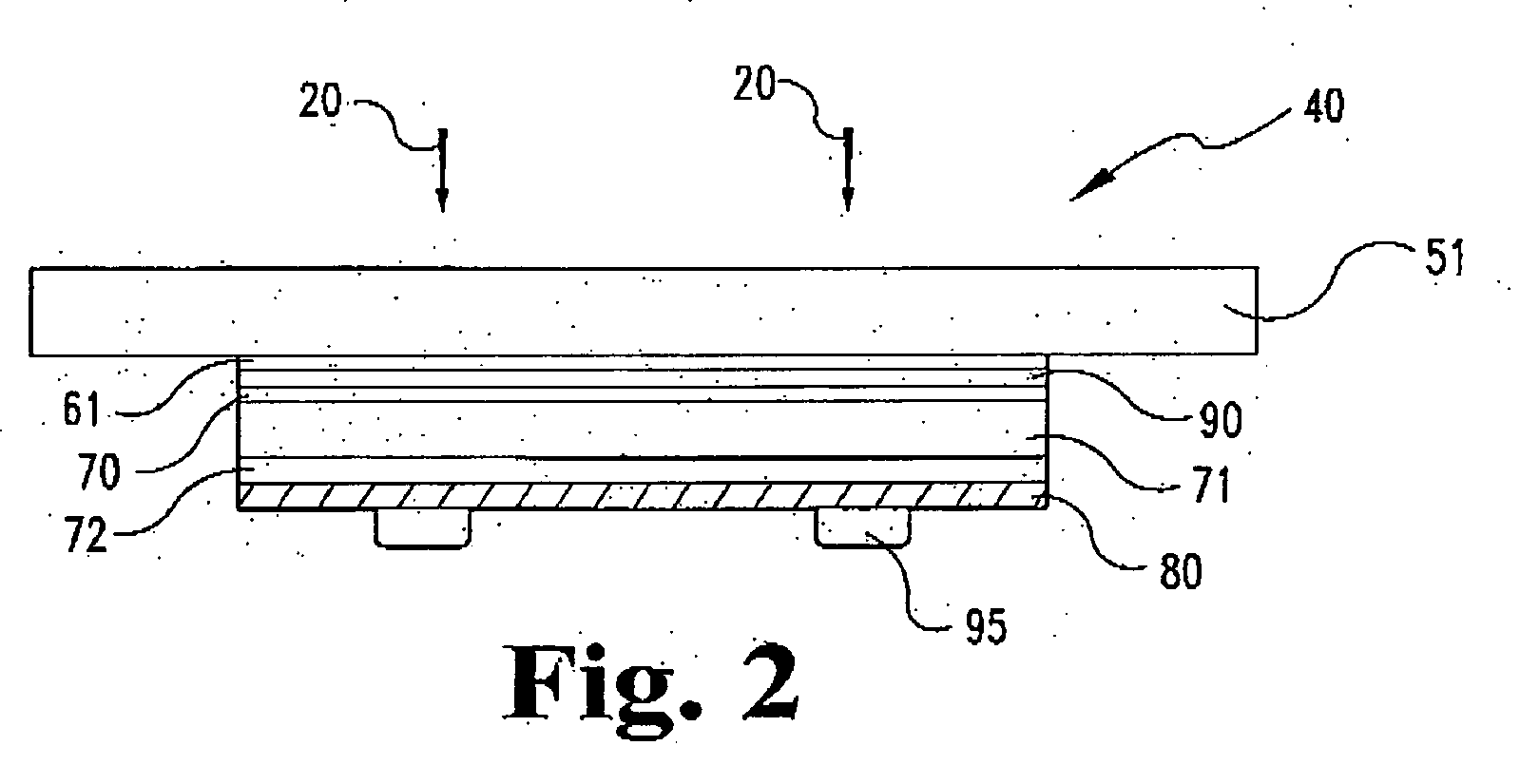Photo-voltaic cells including solar cells incorporating silver-alloy reflective and/or transparent conductive surfaces
a technology of solar cells and reflective surfaces, applied in the field of photovoltaic cells including, can solve the problems of increasing the cost of silicon based solar cells, the initial cost of building devices to generate electricity from solar power is still too high to compete with more conventional sources of electrical generation, and the cost of generating electricity from sunlight is still higher than the cost of generating electricity, so as to achieve high light-to-electricity conversion efficiency
- Summary
- Abstract
- Description
- Claims
- Application Information
AI Technical Summary
Problems solved by technology
Method used
Image
Examples
example 1
[0059] Referring now to FIG. 1 for illustrative purposes. A photo-voltaic cell, similar to device 8, is constructed in order to test the stability of a silver-alloy of the present invention in the manufacture of weather resistant solar cells. Beginning with substrate 5, which may be comprised of materials such as stainless steel, successive layers substantially parallel to one another as illustrated in FIG. 1 are laid down.
[0060] Layer 1, which resides next to layer 5, is about 50 nm thick and comprised of a silver-alloy including, for example, aluminum 0.6 a / o percent, copper 1.0 a / o percent and silver 98.4 a / o percent. Layer 2 resides next to silver-alloy thin film or coating layer 1. Layer 2 is 50 nm thick and comprised of p-type semiconductor material comprised of, for example, silicon doped with, for example, at least one of the following compounds boron, aluminum, gallium, or the like.
[0061] Layer 3 resides next to layer 2. Layer 3 is a n-type semiconductor about 50 nm thick...
example 2
[0063] Referring now to FIG. 3 for illustrative purposes. A photo-voltaic cell, similar to device 100, is constructed in order to test the stability of a silver-alloy of the present invention in the manufacture of weather resistant solar cells. A silver-alloy thin film, coating, or layer 110, about 50 nm thick, is deposited on layer 104 using, a DC sputtering process and a silver-alloy target. The silver-alloy target used to deposit layer 110 comprises 3.0 a / o percent zinc, 1.0 percent copper and 96.0 a / o percent silver.
[0064] The average reflectivity, in the visible spectrum, of silver-alloy thin film 110 is about 95%. The reflectivity of the silver-alloy layer is higher than the reflectivity of the commonly used aluminum based materials, which have reflectivity values the range of 80 to 83%. Solar voltaic cells 100 manufactured with silver-alloy thin films 110 have higher light to electricity conversion efficiencies than solar voltaic cells manufactured with aluminum alloys.
[006...
PUM
| Property | Measurement | Unit |
|---|---|---|
| thick | aaaaa | aaaaa |
| thick | aaaaa | aaaaa |
| thickness | aaaaa | aaaaa |
Abstract
Description
Claims
Application Information
 Login to View More
Login to View More - R&D
- Intellectual Property
- Life Sciences
- Materials
- Tech Scout
- Unparalleled Data Quality
- Higher Quality Content
- 60% Fewer Hallucinations
Browse by: Latest US Patents, China's latest patents, Technical Efficacy Thesaurus, Application Domain, Technology Topic, Popular Technical Reports.
© 2025 PatSnap. All rights reserved.Legal|Privacy policy|Modern Slavery Act Transparency Statement|Sitemap|About US| Contact US: help@patsnap.com



